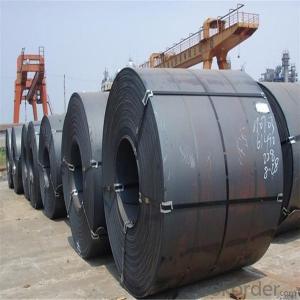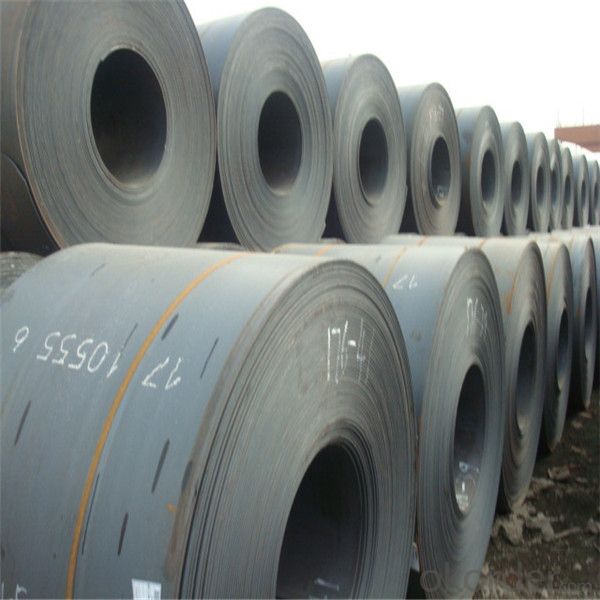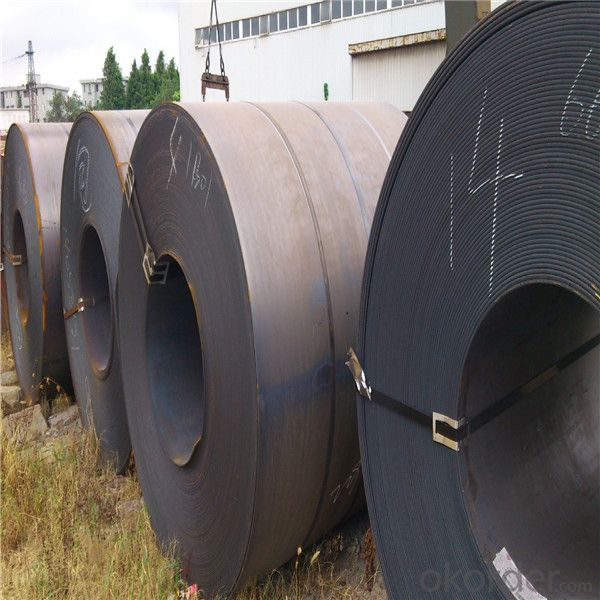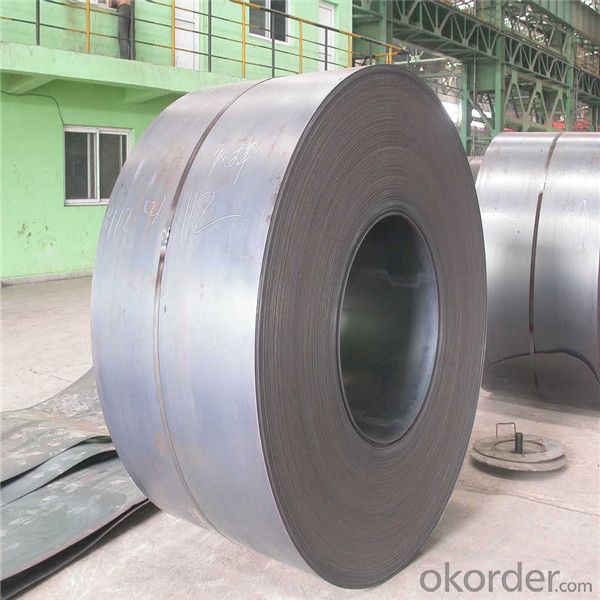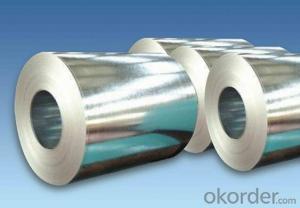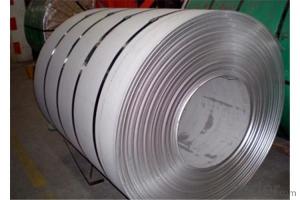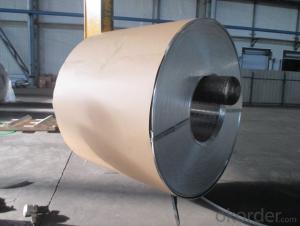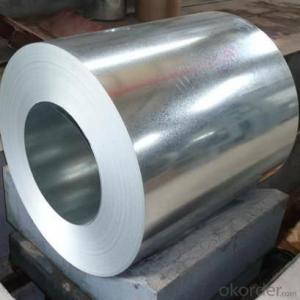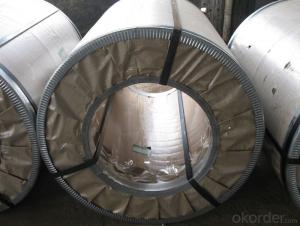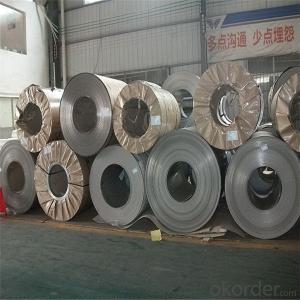Q195 Q275 etc Prime hot rolled steel coils hr coil competitive price and high quality in China
- Loading Port:
- Tianjin
- Payment Terms:
- TT OR LC
- Min Order Qty:
- 50 m.t.
- Supply Capability:
- 1000 m.t./month
OKorder Service Pledge
OKorder Financial Service
You Might Also Like
Specification
Hot Rolled Steel is widely available in the A36 steel alloy. The process to create Hot Rolled Steel
creates a more ductile steel with a rough surface finish and is sometimes more difficult to machine.
The cost is usually much less than a similar Cold Rolled product. Hot Rolled Steel A36 comes in many
shapes including: hot rolled steel flat bars, hot rolled steel flat bars, hot rolled steel round bars, hot rolled
steel square bars, hot rolled steel channels, hot rolled steel angles, and hot rolled tubing. Order Hot Rolled
Steel Alloys in A36 Hot Rolled Steel Alloys and Hot Rolled Stainless Steel Sheets in small quantities and
no minimums of all Stainless Steel at The Metal Store.
Uses: Hot rolled products like hot rolled steel bars are used in the welding and construction trades to make
railroad tracks and I-beams, for example. Hot rolled steel is used in situations where precise shapes and
tolerances are not required
Standard and Grade :
Hot rolled steel coils | ||||
JIS | ASTM | SAE | EN | |
Commercial quality | G3131 SPHC | A569 A635 A659 A1011 CS Type A,B,C | 1006~1025 |
10111 DD11 |
Drawing quality | G3131 SPHD | 1006~1010 | 10111 DD12 | |
Deep drawing quality | G3131 SPHE | A622 A1011 DS Type A,B | 1006~1010 | 10111 DD13 DD14 |
General structure (T.S.<490N/MM2) | G3101 SS330 SS440 G3106 SM400A G3132 SPHT1 SPTT2 SPHT3 | A36 A283 GR.C A570 GR.30~40 A1001 SS GR.30~40 |
1010~1025 | |
General structure (T.S.≥490N/MM2) | G3101 SS490 G3106 SM490A SM490YA | A570 GR.45~50 A607 GR.45~70 A1011 SS GR.45,50 |
J1392 050X | |
|
Application :
Automobile Industry, electrical appliance, machinery manufacturing, container manufacturing, shipbuilding,
bridge, pipeline, and receive high acclaim from our customers for its excellent quality.
Packing:
Packaging Detail | The packing of coil consists of anti-damp paper ,PVC film ,hardboard paper , steel box , strapped with steel strips, fitted with locks and edge protectors and guarantees the optimal condition of the delivered goods. Each coil can be additionally fitted with wooden/steel skids(eye of the side) or wooden pallets(eye of the sky) |
Delivery Time | within 30 days of receipt of LC original or prepayment |
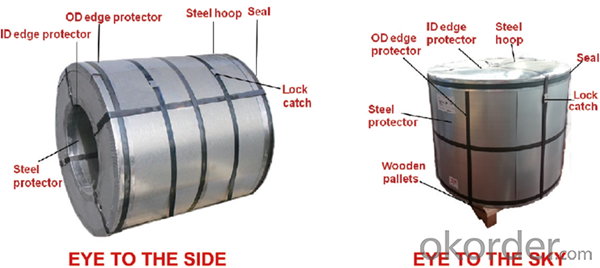
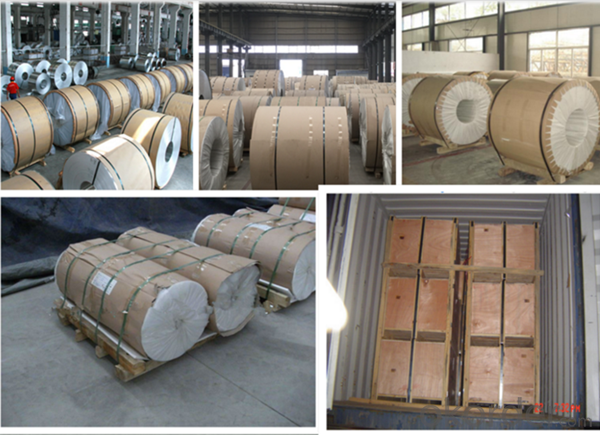
Our Services
MOQ | FCL, 25 metric tons per 20GP, can be assorted with different sizes. |
LCL for trial order is acceptable. | |
Price Term | EX-WORK, FOB China Port, CNF, CIF |
Payment | T/T, 30% advanced payment before production and balance before shipment; OR Irrevocable L/C at sight. |
Delivery Time | within 30 days of receipt of LC original or prepayment |
FAQ:
1. Can you offer OEM to me? What about MOQ?
Of course, we are a professional with OEM manufacturer for 9 years. the MOQ can be 50 ton/ order..
2. How to guarantee the quality of the products?
We have established the international advanced quality management system,every link from raw
material to final product we have strict quality test;We resolutely put an end to unqualified products
flowing into the market. At the same time, we will provide necessary follow-up service assurance.
3. How long can we receive the product after purchase?
Usually within thirty working days after receiving buyer’s advance payment or LC. We will arrange the
factory manufacturing as soon as possible. The cargo readiness usually takes 15-25 days, but the
shipment will depend on the vessel situation.
4.How Can I Get Some Sample?
We are honored to offer you free sample, but courier charges will be on your side.
- Q: What is the average surface finish tolerance for steel coils?
- The average surface finish tolerance for steel coils can vary depending on the specific requirements and applications. However, commonly accepted standards for surface finish tolerance in the steel industry range between 10 to 20 microinches (0.25 to 0.5 micrometers).
- Q: Can steel coils be coated with zinc-aluminum alloy?
- Yes, steel coils can be coated with zinc-aluminum alloy.
- Q: What is the difference between carbon steel and spring steel?? And which is the better one to make swords with??
- All steel has carbon in it. If too much carbon is in the steel it is extremely hard and brittle. Like cast iron. The only difference between iron and steel is the level of carbon. Cast iron is very hard. A drill can barely drill thru it unless you treat it with something like cobalt or titanium nitride. But if you hit cast iron with a hammer very sharply it will break into pieces from the shock. Too low of carbon causes problems though. Steel is very flexible and machinable when it has very low carbon, but it also doesn't wear very well. If you made a sword out of low carbon steel, it would bend very easily and the edge would get dull quick. If you bent it, it wouldn't spring back either. That gets us to spring steel. This is just the right amount of carbon so the steel is very hard and the sword can hold an edge. It also gives it shock resistance. You can bend the sword and it returns to it's original shape. That is why it is called spring steel. The steel resists bending and when it does bend, as long as it isn't to far, it springs back when let go, to it's original shape
- Q: i was giving this old knive. the knife part is stainless steel and has a couple rust spots but im not sure that the handle is (i think stainless) but it has this un smooth surface i dont think its rust because its not brown. would rubbing alcohol help clean it?
- You can also try Barkeepers Friend.
- Q: What are the different grades of steel used in manufacturing steel coils?
- The different grades of steel used in manufacturing steel coils include low carbon steel, medium carbon steel, high carbon steel, and stainless steel.
- Q: What are the common methods of slitting steel coils?
- There are several common methods of slitting steel coils, each with its own advantages and applications. 1. Rotary Shear Slitting: This method involves using rotary cutting knives to slit the steel coil. The coil is fed through the rotary shear machine, and the knives make simultaneous cuts along the length of the coil. Rotary shear slitting is known for its high-speed operation and ability to handle thicker gauge materials. 2. Loop Slitting: Loop slitting is a method where the steel coil is fed into a looping pit, creating a loop of material. The loop is then pulled through a set of knives that make the slits. This method is commonly used for thin gauge materials and provides precise cuts with minimal burr. 3. Drag Slitting: In drag slitting, the steel coil is fed through a set of driven rolls or drag pads, which help to maintain tension on the material. The coil is then guided through circular knives that make the slits. Drag slitting is suitable for various gauges of steel and offers good accuracy and edge quality. 4. Crush Slitting: Crush slitting involves passing the steel coil through a set of rolls, where one roll is rubber-covered and the other is hard. The rubber roll compresses the material against the hard roll, creating the slits. This method is commonly used for thin gauge or delicate materials as it minimizes the risk of edge damage. 5. Laser Slitting: Laser slitting utilizes a high-powered laser beam to make precise cuts on the steel coil. This method is highly accurate and allows for complex slitting patterns and narrow width cuts. Laser slitting is often used for high-end applications that require superior edge quality. Each of these methods has its own advantages and is chosen based on factors such as material thickness, desired edge quality, production speed, and cost considerations. It is important to carefully select the appropriate slitting method to ensure the desired outcome and efficiency in steel coil processing.
- Q: How are steel coils used in the manufacturing of industrial mixers?
- Steel coils are used in the manufacturing of industrial mixers as they are typically used to construct the main body and structural components of the mixer. The coils are formed into the desired shape and size, providing strength, durability, and stability to the mixer, allowing it to withstand the rigorous mixing processes involved in industrial applications.
- Q: More specifically steel wire (around 1/8 diameter). I'm doing a science fair project where I'm testing if concrete encased in steel has more fire resistance than steel by itself. However, I have no idea what the dimensions of concrete encased steel is so I can't scale down. And if I did have the dimensions I wouldn't know how to encase it around the steel wire (do I just poor concrete over it (heck I've never even used concrete)? Thanks for any help.
- OK, here is my take on it Take equal lengths of steel wire, one is going to bare, one is going to be encased You will need a tension rig, simply this will be one fixed end and one end you can hang a weight down. For the test you will affix one end and string it between to supports with one end hanging off, which is where you will put the weight. The put a ruler where the weight is, so as the weight pulls the wire down (after it is hot) you can time the stretching. lastly you need a place to put a controlled fire under the wire, I'd reccommend something tame like a camping stove OK, got a test rig and two pieces and a way to test. You'll have to play with different fires and weights to see what works best Putting the concrete on the wire is a tricky one since you don't want the concrete to take the load. Get a tub or dish of approriate size and put some wet concrete in it, partway up. Take one of the wires and coat it with wax or something like it that is soft. Place the wire, with the ends sticking out, in the concrete tub and pour more on to cover it. Let this whole thing harden. You might want to have a specific shape to the tub so it comes out a certain size Now, you have an uncoated wire and an coated one. Be careful you don't pull the wire out of the concrete Another way to do this would be to use joing compound, which is a type of mortor (cement). You can buy it a home depot or such. Mix it up as thick as possible and just cake it on the wire and let harden. You can shape the coating using saran wrap or something maybe. I my world we call this stuff monster mud, its used to shape things for Halloween props like robes into figures. Its quite sturdy when done When you are ready to test just hook each part up with the same fire and weight and take readings of stretch vs. time
- Q: I want an EDC (Every Day Carry) Knife that:~folds~is non-serrated~has a pocket clip~has a blade length of about 4 in. long~is concealable~urban environment friendly~priced around $50What do you suggest? I am currently thinking on purchasing the Cold Steel 4 inch Zytel Ti-Lite.
- Based okorder /
- Q: Can I ever get my classical guitar reinforced so it can have steel strings on it?
- NO. A classical guitar is braced very differently than a steel-string acoustic. Plus the set-up is completely exceptional - the best way the nut is slotted, the best way the strings tie on the bridge, and so on. The anxiety of steel strings would pull the bridge and top off of a just right classical guitar. Although it's a mass-produced cheap person who would take the tension - you'll certainly not be capable to play it - the action on a nylon string guitar is far better in most cases. Who cares how long strings last - you're talking about $5-10 for a suite of strings. Changing strings is part of playing guitar.
Send your message to us
Q195 Q275 etc Prime hot rolled steel coils hr coil competitive price and high quality in China
- Loading Port:
- Tianjin
- Payment Terms:
- TT OR LC
- Min Order Qty:
- 50 m.t.
- Supply Capability:
- 1000 m.t./month
OKorder Service Pledge
OKorder Financial Service
Similar products
Hot products
Hot Searches
Related keywords
